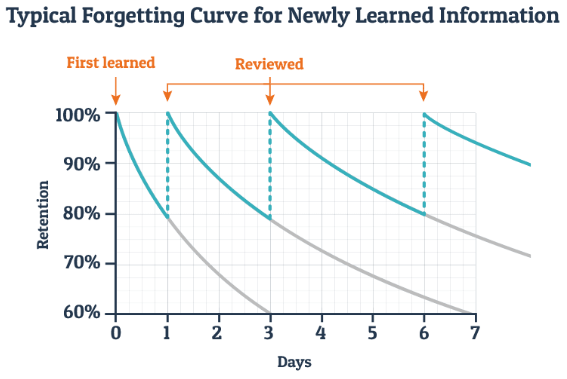Why Cramming for the SAT® and ACT® Doesn’t Work
When I was in high school, my good friend Alex had a serious habit of procrastinating until the very last minute. Pretty typical for most teens, right? Alex would cram for most of his school tests—quizzes, midterms, finals—and usually managed to scrape by with mostly Cs—enough to pass—and that was always “good enough” for him.
Then came the SAT®. True to form, Alex didn’t prep or plan. He figured he could cram just like he always did. The night before the SAT®, he stayed up late, desperately trying to memorize key concepts and formulas, hoping they’d be on the test. Honestly, he had no idea what he would be tested on beyond the basics.
The next morning, Alex showed up for the SAT® exhausted but somewhat confident that his last-minute, intense efforts would pay off. However, he quickly realized that while he could remember some key concepts, he was struggling to piece everything together.
Despite all his last-minute efforts, Alex's performance was mediocre at best. What Alex and many other test takers have learned is that, unlike many of the tests students take in school, the ACT® and SAT® simply cannot be crammed for.
Understanding the Nature of ACT® and SAT® Exams
To fully grasp why cramming for such high-stakes exams as the ACT® and SAT® doesn’t work, you need to understand the function of the ACT® and SAT®.
What is the purpose of the ACT® and SAT®?
The ACT® and SAT® serve to:
demonstrate college readiness,
assess academic proficiency, and
fulfill a graduation/college admission requirement/criteria.
To demonstrate college readiness, both tests are designed to evaluate a student’s preparedness for college by measuring:
critical thinking,
problem-solving, and
analytical skills.
The ACT® and SAT® aim to predict a student’s potential for academic success in their first year of college.
Similarly, the tests assess proficiency in essential skill areas such as:
reading,
writing,
math, and
science reasoning (ACT®).
These academic areas are critical for success in college-level coursework.
In addition, most colleges and universities in the United States use SAT® and ACT® scores as a graduation and/or admission requirement or, at the very least, part of their admissions criteria. These standardized tests provide a common measure that admissions officers can use to compare applicants from different educational backgrounds.
The Science Behind Learning and Memory
Effective preparation for the ACT® and SAT® requires ample time, as these exams demand deep understanding and long-term retention of material. Think of ACT® and SAT® prep as a marathon rather than a sprint.
Why do these tests demand so much time? We need to unpack the scientific relationship between learning and memory to answer that question.
Memory operates in short-term and long-term modes. Effective learning and true recall require the transfer of information to long-term memory.
Like my high school buddy Alex, you might have crammed for an exam and felt confident, but forgotten most of the material shortly after. This happens due to the Ebbinghaus Forgetting Curve, which illustrates how we lose information over time if we don't actively try to remember it.
The forgetting curve shows a steep decline in memory retention right after learning, with most forgetting occurring within the first hour. Without reinforcement, we typically forget around 75% of what we've learned within a day or two.
Ebbinghaus found that while the basic forgetting rate is similar for everyone, factors like prior knowledge, the meaningfulness of the material, and its complexity can influence how quickly we forget.
Cramming often fails because it relies on short-term memory, which is not effectively consolidated by the brain. This method leads to rapid forgetting, as crammed information is quickly lost without true recall.
Ebbinghaus’s findings highlight the importance of regular review and connecting new information to existing knowledge for long-term memory retention. By using strategies like spaced-out studying and frequent repetition, we can slow down the forgetting process, leveraging the brain's natural processes for deeper understanding. This approach is especially effective for high-stakes exams like the SAT® and ACT®, resulting in better performance and more reliable retention of information.
More Reasons Why Cramming Fails
Beyond the forgetting curve and the science behind memory, there are other reasons why cramming fails.
Overload, Fatigue, and Cognitive Limitations: Cramming leads to cognitive overload and fatigue, as the brain can only process and retain a limited amount of information at a time.
When students attempt to absorb large volumes of material quickly, they overwhelm their cognitive capacities. This results in diminished focus, increased errors, and ultimately, reduced retention.
The brain requires sufficient rest and time to process and consolidate new information, which last-minute cramming does not provide.
In contrast, long-term test prep and regular studying allow for this essential consolidation.
Lack of Deep Understanding: Surface Learning vs. Deep Learning: Cramming allows for surface learning, where students focus on memorizing facts rather than understanding concepts. Surface learning is shallow and temporary, leading to quick forgetting after the test.
In contrast, deep learning involves a thorough comprehension of the material, enabling students to apply knowledge in various contexts. Deep learning requires time and repeated exposure to the content, which is incompatible with the hurried nature of cramming.
Increased Stress and Anxiety: Impact on Performance: For test takers susceptible to stress and test anxiety, cramming will only serve to exacerbate those issues.
Cramming significantly increases stress and anxiety levels, negatively impacting performance. The pressure to learn a large amount of material in a short time can lead to high stress, which interferes with the brain's ability to function optimally. Elevated stress levels can impair memory, reduce concentration, and lead to poor test performance.
Moreover, the anxiety associated with cramming can cause physical symptoms such as headaches, fatigue, and sleep disturbances, further hindering test performance and academic success.
In short, cramming undermines the brain’s ability to effectively learn and retain information. Only consistent, spaced study practices can ensure long-term retention and academic success.
Effective Study Strategies
Rather than cramming, adopting consistent, long-term study habits, using effective study schedules with regular breaks, and prioritizing sleep and nutrition are key strategies for successful test prep.
Consistent, Long-Term Study Plans: Effective preparation for high-stakes exams like the SAT® and ACT® requires consistent, long-term study plans rather than last-minute cramming.
Regularly taking practice tests that mirror the test they’re prepping for helps test takers become familiar with the test format and types of questions they will encounter, reducing surprises on test day and boosting confidence.
Additionally, taking full-length practice tests under timed conditions simulates the real test experience, building the mental and physical endurance needed to maintain performance, energy, and focus throughout the entire exam.
Use of Study Schedules and Breaks: Creating a balanced study schedule that includes regular breaks is essential for maintaining focus and preventing burnout.
A productive study session includes taking breaks when necessary. Overexertion leads to learning fatigue. Short breaks of 15-20 minutes give the brain a chance to disengage and recharge without losing focus.
Another effective method for a solid study:break ratio is the Pomodoro technique, which involves studying for 25-minute intervals followed by short breaks.
Additionally, incorporating relaxing activities into the schedule, such as light exercise, reading for pleasure, or mindfulness meditation, can help lower stress levels and improve concentration.
Students can enhance retention and understanding by spacing out study sessions and taking breaks, making their study time more productive.
Importance of Sleep and Nutrition: Adequate sleep and proper nutrition are critical for optimal cognitive function and test performance.
Don't miss our latest post, Increase Your Students' SAT® and ACT® Scores with Effective Test Day Tips, where we share the most effective strategies for test day success. Be sure to check it out and share it with your clients!
These practices not only improve retention and understanding but also help manage stress and anxiety, leading to better performance on test day.
Pro Tips for Test-Prep Tutors
Establish a consistent study routine that promotes steady progress with tailored, attainable goals.
Use ACT® and SAT®-aligned practice tests and create authentic testing conditions to familiarize your students with the test format and build endurance.
Teach soft skills, such as time management, to build a strong learning foundation. These essential learning skills will lead to a major improvement in academic performance!
Offer your clients strategies for managing test anxiety and stress, such as mindfulness techniques and relaxation exercises
By combining these effective study strategies with professional guidance, students can improve their retention and understanding, manage stress and anxiety, and perform better on test day.
All this is to say, cramming for the SAT® and ACT® is simply not effective. These high-stakes exams require time and dedication to succeed. With consistent, long-term study habits and a thorough understanding of the material through tailored study plans, effective test-taking strategies, and spaced-out studying, your students can not only pass but achieve their target scores.
Step into the Future of Test Prep with Clear Choice Prep!
The SAT® has switched to all-digital testing—and so has Clear Choice Prep!
Equip your tutoring business with cutting-edge, fully digital test-prep courses. Our white-label, adaptive Digital SAT® practice tests feature precise, algorithmic scoring, providing your tutors and students with essential data for personalized instruction and score improvement.



